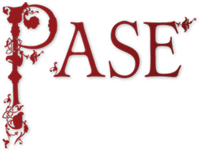Table of Contents
Top of page
Name
Summary
Distribution Map
Property List
Profile
Bibliography
Bottom of page
Gerald 4
Gerald ‘of Chilcomb’ (Hants), fl. 1066
Male
DWP
4 of 5
Summary
Gerald 4 was a dependant tenant on a Hampshire manor of the Old Minster, Winchester, TRE and so was under the lordship of Stigand 1 as bishop of Winchester; no separate TRE hidage or value is given for Gerald’s land in DB, but it was assessed as 2 ploughlands in 1086.Distribution map of property and lordships associated with this name in DB
List of property and lordships associated with this name in DB
Holder 1066
| Shire | Phil. ref. | Vill | DB Spelling | Holder 1066 | Lord 1066 | Tenant-in-Chief 1086 | 1086 Subtenant | Fiscal Value | 1066 Value | 1086 Value | Conf. | Show on Map |
|---|---|---|---|---|---|---|---|---|---|---|---|---|
| Hampshire | 3,1 | Chilcomb | Giraudus | Gerald 'of Chilcomb' | Stigand, archbishop of Canterbury | Walkelin, bishop of Winchester | unnamed monks of Old Minster, Winchester, in 1086 | 0.00 | 2.16 | 4.80 | C | Map |
| Totals | ||||||||||||
Profile
Gerald 4’s land lay within the great manor of Chilcomb in Hampshire, a possession of the monks of the Old Minster, Winchester, that included much of the land around the city (Munby 1982: Ch3 Notes) and was under the lordship of Stigand 1 in his role as bishop of Winchester. Gerald is named among several people who held land within Chilcomb TRE and who ‘could not withdraw with their land to another lord’, indicating that they were dependent tenants. It is possible that Gerald was a religious associated with the Old Minster who held his land as a prebend.DB does not give a hidage or value for Gerald’s land, noting simply that his successor held ‘land for 2 ploughs’ that had been Gerald’s TRE; but if the total value of the manor is divided in proportion to the ploughlands within it then Gerald’s land would have been valued at about £2 3s 2½d.
Lewis (1995: 141) regarded Gerald 4 and Gerald 5 as different people and was probably correct to do so. Nevertheless, although their TRE lands were about 35 miles apart that of Gerald 5 was large enough for this distance not to be an insurmountable obstacle to identification; and, given the extreme rarity of the name Gerald in pre-Conquest England it remains conceivable that they were the same person.
Bibliography
Lewis 1995: C. P. Lewis, ‘The French in England before the Norman Conquest’, Anglo-Norman Studies 17 (1995), pp. 123-44, at p. 141.
Munby 1982: Domesday Book 4: Hampshire, ed. J. Munby (Chichester, 1982)
